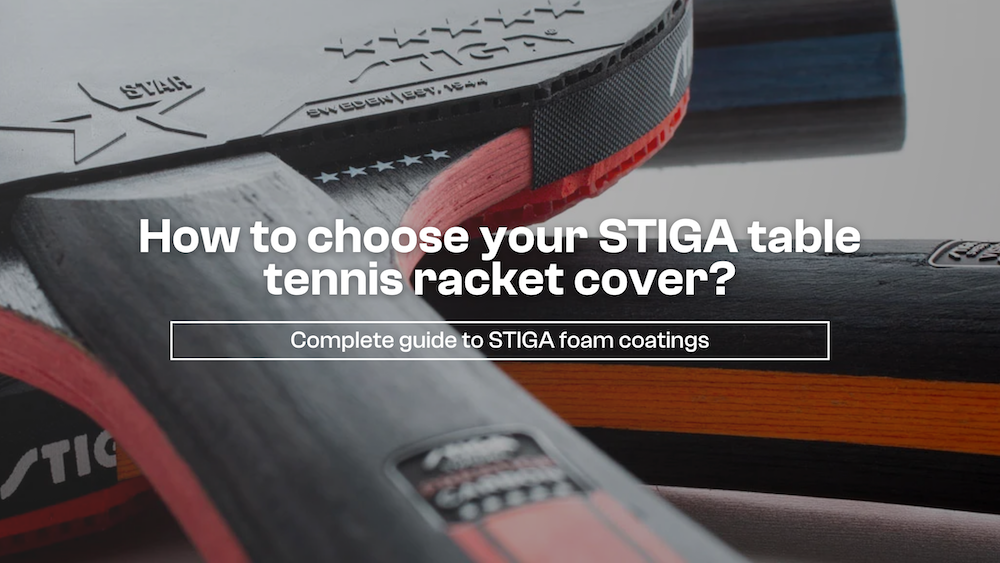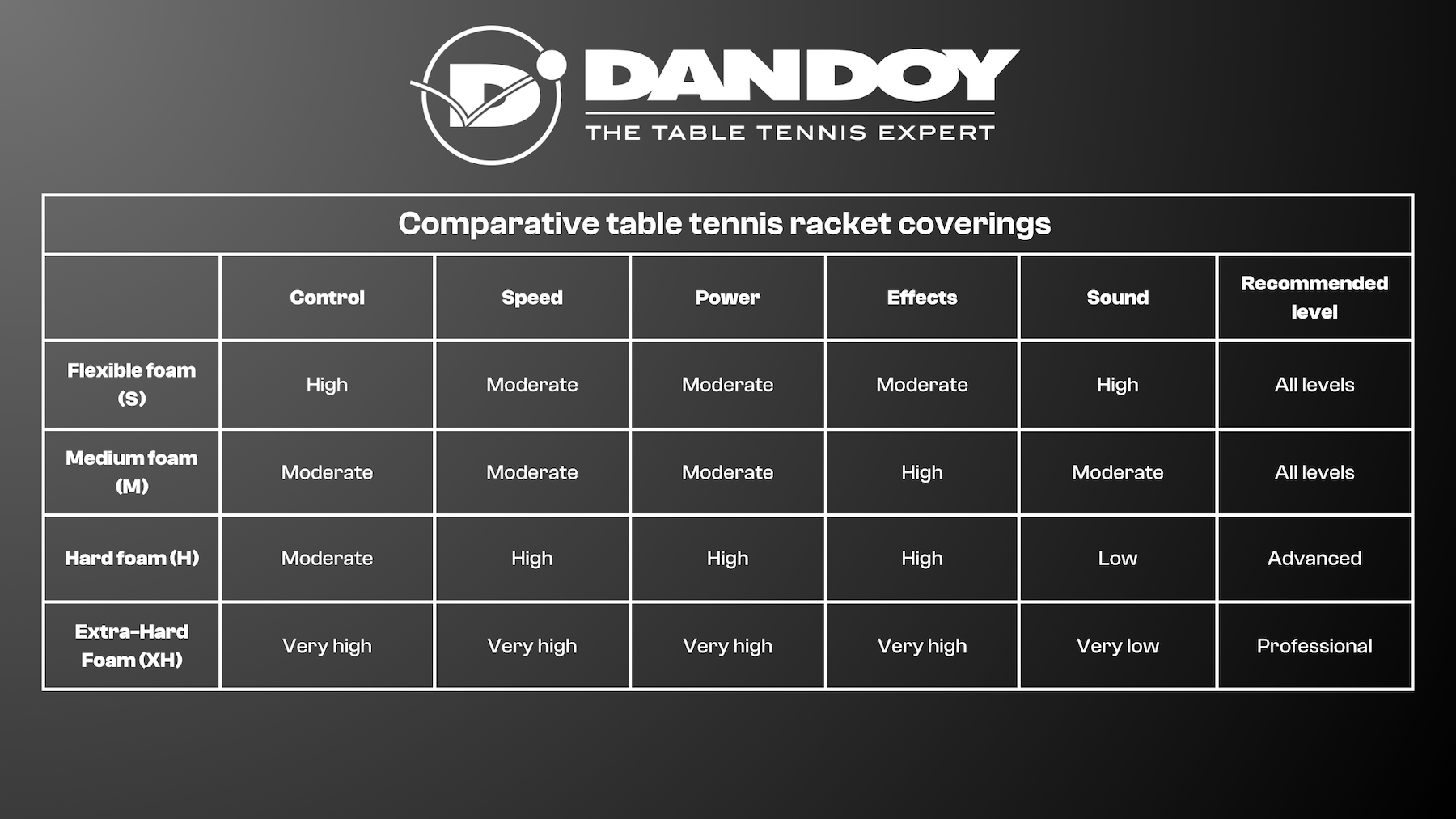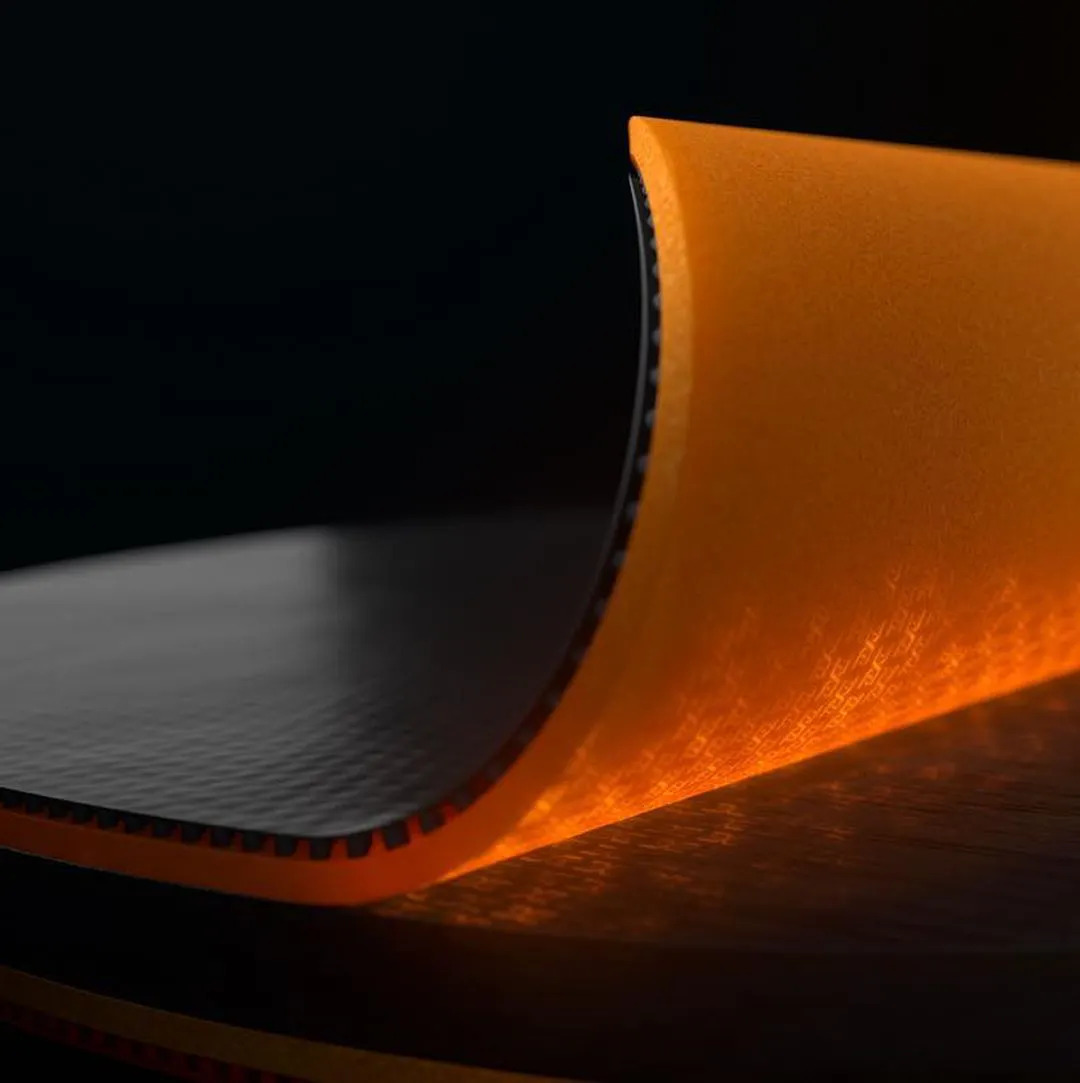Save up* !
-
to the purchase of50€
-
to the purchase of 100€
-
to the purchase of 150€
-
to the purchase of 200€
-
to the purchase of 250€


Choosing the right table tennis rubber is a crucial step for any player, whether novice or experienced. In this comprehensive guide, let's dive together into the subtleties of table tennis rubbers and their specific characteristics. With this detailed information and our expert advice, get ready to maximize your table tennis performance!
Your table tennis rubbers are the spearhead of your game. Whether you aim for absolute control, a perfect balance between speed and precision, or explosive power, the choice of the type of rubber foam should be made according to your playing style and level.


The soft sponge stands out for its prolonged contact between the ball and the rubber, providing optimal control and giving the player valuable time to adjust their shots. The softness of the sponge adds an auditory dimension, producing a distinctive sound when hitting. If you value control and a pleasant sensory experience, the soft sponge may be the ideal choice to enhance your game.
The medium sponge represents the perfect balance between speed and control. It is a versatile option ideal for those looking to increase the pace of their game while maintaining impeccable accuracy. The medium hardness of the sponge allows optimal contact with the ball, translating into better control and improved spin. Suitable for all levels, the medium sponge offers the flexibility needed to adapt to various playing styles. If you aspire to increase your speed or refine your technique, choosing a medium sponge table tennis rubber is a reliable and effective choice.
The hard sponge is favored by advanced players who want to take their game to the next level. Designed to be stiffer than soft sponges, it allows the player to generate more power and spin in their shots. The reduced contact with the ball generates more rebounds and spins. Additionally, the increased rigidity of the sponge gives players better control over speed and movement. While not recommended for beginners, the hard sponge is the optimal choice for advanced players seeking to perfect their technique. Adding speed, spin, and control offers a distinct advantage that propels the game to new heights.
The extra-hard sponge embodies the highest level of stiffness, offering the greatest speed and control for professional players. Reserved for those with exceptional technique, this sponge is the stiffest of all. Professional players who choose extra-hard sponges master the art of ball control with remarkable skill. With minimal contact, this sponge generates maximum rebound and impressive spins. Although not recommended for beginners and intermediate players, it is the ideal choice for top-level players looking to optimize their performance. It is essential to note that effective use of an extra-hard sponge requires superior skill and technique compared to a standard hard sponge.


The choice of the sponge thickness on your table tennis racket has significant implications for the speed, spin, and control of your shots. A thicker sponge extends the contact time between the ball and the racket, allowing for increased speed and spin. However, this sponge also absorbs more energy, leading to reduced control. Conversely, a thinner sponge reduces the contact time with the ball, which may limit speed and spin but offers better control.
In conclusion, the thickness of the table tennis racket rubber is a central element of your game. Although a thick rubber may offer superior speed and spin, it is essential to find the ideal thickness to achieve an optimal balance between control and performance. We recommend players test different thicknesses to determine which one best suits their game, thereby improving their performance.
The choice of rubber thickness depends on your playing preferences. A thin sponge offers superior control, while a thick sponge prioritizes speed and spin. Select according to your playing style and individual priorities.
Rubber performance decreases over time and with exposure to the elements. Generally, the rule is simple: (number of days of play/week) = (number of times to replace/year). So, if you play once a week, annual replacement is recommended. Professional players frequently change their rubbers, sometimes every week, to maintain optimal performance. The lifespan of a rubber is estimated at around 60 hours of play or after about 2 years of use.
A worn-out rubber is indicated by a reduction in spin and a loss of liveliness. Although the change is slow and sometimes difficult to detect visually, it is crucial not to play with worn-out rubbers for long periods. Bad habits can develop in response to defective equipment, making players more passive. A simple test is to rub a ball on the rubber: if it slides more in the center, replacement is necessary.
If you prioritize control and a pleasant sensory experience, opt for a soft sponge (S). For a perfect balance between speed and control, the medium sponge (M) is ideal. Advanced players seeking more power should consider the hard sponge (H), while the extra-hard sponge (XH) is reserved for professionals with exceptional technique.